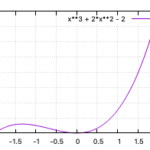endswith を使う。
例
str1 = "こんにちは"
result1 = str1.endswith("は")
result2 = str1.endswith("わ")
print(result1)
print(result2)
結果
True False
雑記
投稿日:
endswith を使う。
str1 = "こんにちは"
result1 = str1.endswith("は")
result2 = str1.endswith("わ")
print(result1)
print(result2)
True False
執筆者:seyanen
関連記事

ファイルを読み込んで、1行目だけをコンソールに出力するには readlines() を使う。 例 f = open(“data.txt”) lines = f.readlines() print(li …

list に対して、extend を使う。 例 list1 = [1,2,3] list2 = [4,5,6] list1.extend(list2) print(list1) 結果 [1, 2, 3 …

python3 で、文字列を一文字ずつのリストに変換する方法
string を list() で変換すれば良い。 例 str1 = ‘Good morning.’ list1 = list(str1) print(list1) 結果 [‘G’, ‘o’, ‘o’ …

python3 で文字列を区切り文字を指定してリストに変換する方法
split メソッドを使う。 例 str1 = ‘this, is, a, pen’ str2 = str1.split(‘,’) print(str2) 結果 [‘this’, ‘ is’, ‘ a …

2023/01/18
matplotlib のグラフ作成と gnuplot との対応 比較

2022/10/14
pythonで配列(リスト)の、ある要素がわかっているときにその次の要素を取得する方法。